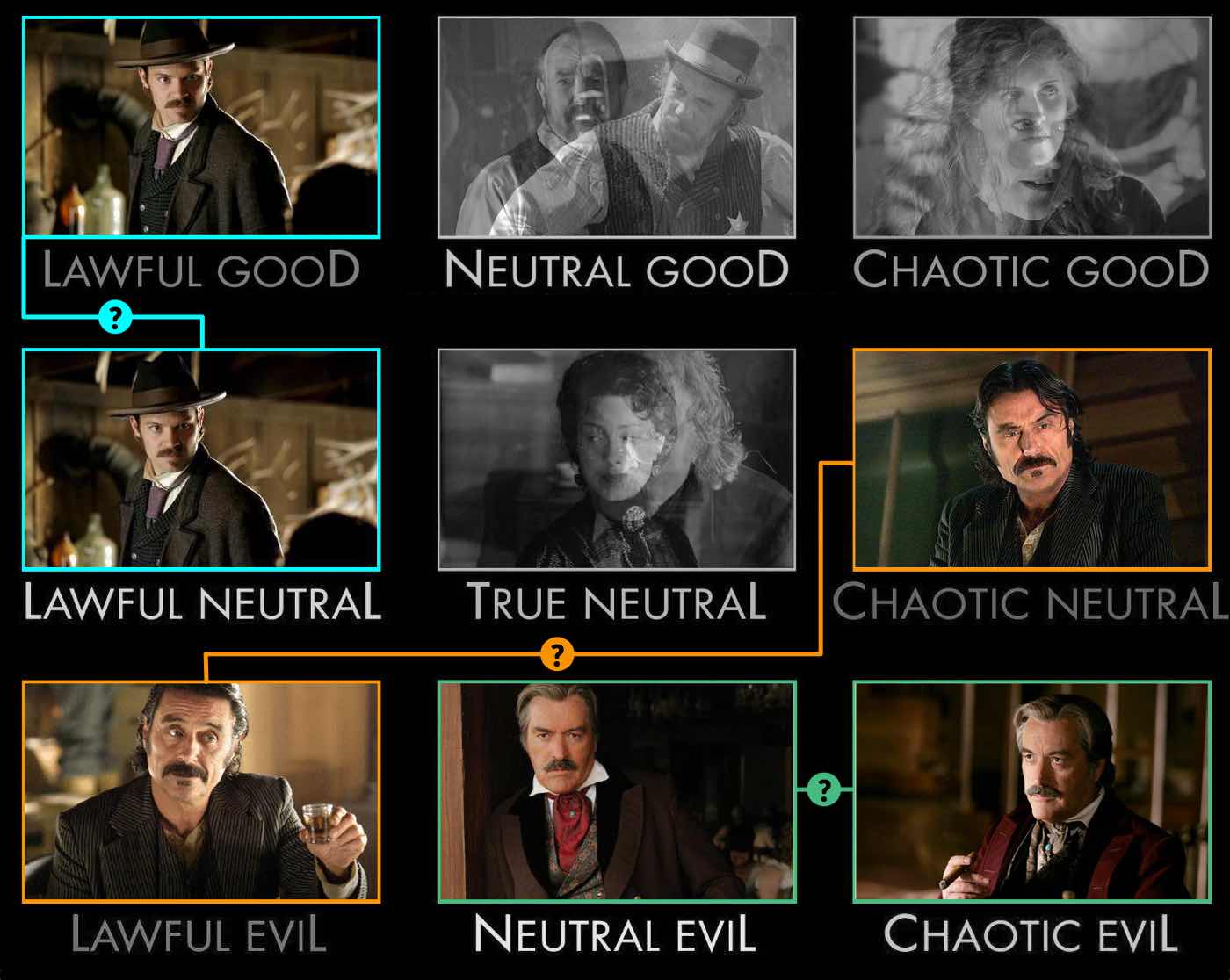Three for Thursday: Alignment

Alignment is an evergreen topic in RPG forums, possibly because if you put 5 roleplayers into a discussion about alignment, you’ll get 11 conflicting opinions about it. For example, the image above is a mashup of two alignment diagrams for one of my all-time favorite TV shows, Deadwood.
If you’re like me, you looked at a couple of those alignment assignments and said to yourself, “That ain’t right!” And even if you’ve never seen Deadwood, you probably looked at the assignments for Al Swearingen (Lawful Evil and Chaotic Neutral) and thought, “Wait, how could two Deadwood fans possibly see the same character so differently?”
Given that alignment is prone to such a wide variety of interpretations, how do you deal with it in your games? I admit that alignment has annoyed me for years.D&Dis the only game I play that incorporates alignment, and our group essentially avoids it in play. But recently I realized while alignment may not be my cup of tea, it’s a big part of many campaigns. So I set out in search of blog posts that discussed alignment with insight and clarity.
Dungeons & Dragons and the ethics of imaginary violence — Clem Bastow looks at how playing evil characters and seeing the results of that evil can help players explore and learn.
How Alignment Defines D&D Characters (And Shouldn’t) — Game designer Will Hindmarch doesn’t get stuck on what each alignment should represent. Instead, he takes a look at how alignment can be a means to explore how characters see the world and are challenged by the decisions it forces them to make.
The Punisher’s Alignment — What is the alignment of the vigilante anti-/hero The Punisher? The question has stirred up a bit of controversy. To find out why (and to catch the twist at the end), read on.
Ω